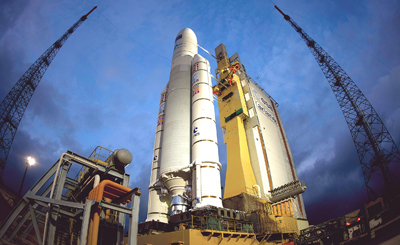INDIAN ARMED FORCES CHIEFS ON OUR RELENTLESS AND FOCUSED PUBLISHING EFFORTS

The insightful articles, inspiring narrations and analytical perspectives presented by the Editorial Team, establish an alluring connect with the reader. My compliments and best wishes to SP Guide Publications.

"Over the past 60 years, the growth of SP Guide Publications has mirrored the rising stature of Indian Navy. Its well-researched and informative magazines on Defence and Aerospace sector have served to shape an educated opinion of our military personnel, policy makers and the public alike. I wish SP's Publication team continued success, fair winds and following seas in all future endeavour!"

Since, its inception in 1964, SP Guide Publications has consistently demonstrated commitment to high-quality journalism in the aerospace and defence sectors, earning a well-deserved reputation as Asia's largest media house in this domain. I wish SP Guide Publications continued success in its pursuit of excellence.
- A leap in Indian aviation: Prime Minister Modi inaugurates Safran's Global MRO Hub in Hyderabad, Calls It a Milestone
- All about HAMMER Smart Precision Guided Weapon in India — “BEL-Safran Collaboration”
- India, Germany deepen defence ties as High Defence Committee charts ambitious plan
- True strategic autonomy will come only when our code is as indigenous as our hardware: Rajnath Singh
- EXCLUSIVE: Manish Kumar Jha speaks with Air Marshal Ashutosh Dixit, Chief of Integrated Defence Staff (CISC) at Headquarters, Integrated Defence Staff (IDS)
- Experts Speak: G20 Summit: A Sign of Global Fracture
Space - Jules Verne’s Unmanned Voyage

From a Space Truck to a Space Garbage Disposal System, from an ISS supplier to an ISS sustainer— the robustness, size and cutting-edge technologies of the ATV are so remarkable that Jules Verne could easily usher in what may be termed Revolution in Space Affairs.
April 3, 1445 hours GMT. Jules Verne docks with the International Space Station (ISS)— unmanned, on automated mode and dot on schedule, creating history as the first of the European Space Agency’s Automated Transfer Vehicles (ATV). On March 9, riding on the mighty shoulders of a special version of Europe’s workhorse launcher, the Ariane 5ES rocket, it was successfully launched into space. Spewing a fiery trail in the night sky, the lift-off occurred at 0103 hours (local time) from the Guiana Space Centre, Europe’s spaceport in Kourou, French Guiana. Specially adapted to the task of lofting the nearly 20-tonne vehicle—more than twice as heavy as the previous largest Ariane 5 payload—the rocket put the ATV in a preplanned low circular orbit 260 km above the earth, inclined at 51.6 degrees relative to the Equator.
Named after the celebrated 19th century French visionary and author, the Jules Verne ATV is the largest and most sophisticated spacecraft ever developed in Europe. But that was not the reason it created space history. Jules Verne is the very first spacecraft in the world designed to combine the functions of an autonomous free-flying platform, a manoeuvrable space vehicle and a space station module. It is also equipped with the capability to conduct automated docking in full compliance with the very tight safety constraints imposed by human spaceflight operations. About 10 m high with a diameter of 4.5 m and weighing 19,357 kg at launch, the ATV incorporates a 45 cubic metre module, derived from the Columbus pressure shell, and a Russian-built docking system, similar to those used on Soyuz manned ferries and on the Progress resupply ship. About three times larger than its Russian counterpart, it can also deliver about three times more cargo.
A day after the launch, with the ATV coursing in the low earth orbit (LEO), the mission came close to being a cropper when an electronic fault sent the entire propulsion system crashing. An overnight recovery operation later, scientists and engineers at the ATV Control Centre in Toulouse, France managed to restore the vehicle’s propulsion system to full robustness, enabling, once again, full failure tolerance.





